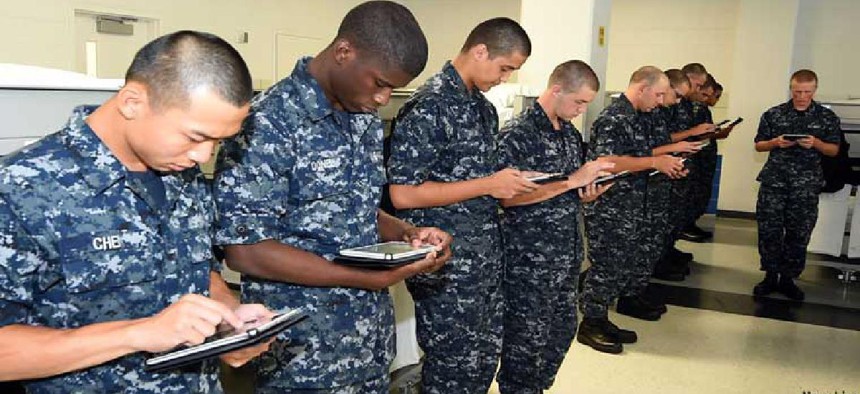Navy report looks to combat racism and sexism in the ranks
The Navy's Task Force One Navy report looks to STEM training, recruitment, grooming policies as paths to encourage diversity and inclusion.
The Navy has released nearly 60 recommendations on combatting systemic racism and sexism in the ranks as part of a long awaited report on diversity and inclusion.
Chief of Naval Operations, Adm. Michael Gilday, ordered the Task Force One Navy report, which spans 141 pages with 56 recommendations, following the mass protests in response to the police killing of George Floyd last summer. Gilday said the Navy had failed to adequately address systemic racism and sexism in the service.
"We have fallen short in the past by excluding or limiting opportunity for people on the basis of race, sexual orientation, sexual identity, gender or creed," Gilday said in a statement. "Simply put, all Sailors – uniformed and civilian - and applicants for accession to the Navy must be treated with dignity and respect above all else."
Gilday went on to say that while there's more work to be done beyond the report, the recommendations will help the Navy move toward "meaningful long-lasting change" and that he was personally committed to.
Each recommendation offers context and ways to measure effectiveness, tackling disparities such as uniform and grooming policies, lack of diversity in officer ranks and promotion and science and technical fields, and the renaming of ships that commemorate the Confederacy or have connections to white supremacist ideologies.
This isn't the first time the Navy has tried to address diversity, and during the course of the six month study, Rear Adm. Alvin Holsey, the director of Task Force One Navy said there was a lot of skepticism around whether this time things would change.
"Every session there's a good number of folk that say nothing is going to change," Holsey told reporters ahead of the report's release, "But we're committed to making sure this happens."
Holsey noted that improving mentorship, to ensure diversity in senior officer ranks was key. The numbers show that Blacks and women are underrepresented in the officer ranks, and the higher up one goes, the less diversity one finds. Black officers compose just 8% of the Navy's officer corps and women just 20%.
"I'll tell you, being here, one of eight black flag officers in the Navy, it's a lonely spot," Holsey said.
"We can't do enough mentorship; that's just one thing we have to do," Holsey said, in reference to promotions and the decrease in representation the higher the ranks. "It's bigger than just mentorship, it's advocacy, it's sponsorship. So I can mentor you, but do I really care?"
Cutting through implicit and subconscious bias of leadership is also key to improving those numbers, he said.
"The more you learn about people, the more you open your eyes and you can see the advantages and disadvantages pretty clearly," Holsey said.
Vice Adm. John Nowell, Jr, the chief of naval personnel told reporters that disparities were clear in certain jobs.
"We know there's more diversity in surface than there is in aviation and submarines," Nowell said, adding that technical fields tend to have less representation.
To change that, one of the five lines of effort targets improving STEM to give sailors, current and future, the background needed to have those technical jobs.
"There are some process issues that we can get after in a very deliberate way to try and increase the diversity coming in the front door and give them a better leg up to compete for those kinds of communities … where we know they'll have good upward mobility."
The report and its recommendations were submitted to the Navy's Culture of Excellence Governance body with an admiral leading each of the five lines of effort. But to work, Jane Roberts, who was the Task Force One Navy's senior civilian advisor, told FCW that resourcing each one properly and ensuring buy-in at the top is essential.
One of the big takeaways from the study, Roberts said, was learning about the "pink tax" or how women often incurred additional financial burdens to meet certain grooming and uniform standards, for example, paying more to get your uniform tailored when pregnant. One of the recommendations is to ensure there's long-term oversight and that a woman on the management advisory groups, an informal body that advises senior leadership on culture issues.
"We bring different strengths to the table and we really needed to make sure that voices were heard," Roberts said. "That's why the management advisory groups are going to be a key to sustaining this ...you don't know until you listen."
This article first appeared on FCW, a Defense Systems partner site.
NEXT STORY: MilCloud adds Amazon Web Services






